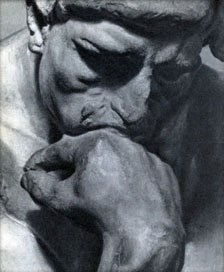Logical consequence a proposition, sentence, or other piece of information that follows logically from one or more other propositions, sentences, or pieces of information. A proposition C is said to follow logically from, or to be a logical consequence of, propositions P1, P2, . . . , if it must be the case that, on the assumption that P1, P2, . . . , Pn are all true, the proposition C is true as well. For example, the proposition ‘Smith is corrupt’ is a logical consequence of the two propositions ‘All politicians are corrupt’ and ‘Smith is a politician’, since it must be the case that on the assumption that ‘All politicians are corrupt’ and ‘Smith is a politician’ are both true, ‘Smith is corrupt’ is also true.
Notice that proposition C can be a logical consequence of propositions P1, P2, . . . , Pn, even if P1, P2, . . . , Pn are not actually all true. Indeed this is the case in our example. ‘All politicians are corrupt’ is not, in fact, true: there are some honest politicians. But if it were true, and if Smith were a politician, then ‘Smith is corrupt’ would have to be true. Because of this, it is said to be a logical consequence of those two propositions.
The logical consequence relation is often written using the symbol X, called the double turnstile. Thus to indicate that C is a logical consequence of P1, P2, . . . , Pn, we would write: P1, P2, . . . , Pn X C or: PXC where P stands for the set containing the propositions p1, P2, . . . , Pn. The term ‘logical consequence’ is sometimes reserved for cases in which C follows from P1, P2, . . . , Pn solely in virtue of the meanings of the socalled logical expressions (e.g., ‘some’, ‘all’, ‘or’, ‘and’, ‘not’) contained by these propositions. In this more restricted sense, ‘Smith is not a politician’ is not a logical consequence of the proposition ‘All politicians are corrupt’ and ‘Smith is honest’, since to recognize the consequence relation here we must also understand the specific meanings of the non-logical expressions ‘corrupt’ and ‘honest’. See also DEDUCTION , IMPLICATION, LOGI- CAL FORM , PROOF THEOR. J.Et. logical constant, a symbol, such as the connectives -, 8, /, or S or the quantifiers D or E of elementary quantification theory, that represents logical form. The contrast here is with expressions such as terms, predicates, and function symbols, which are supposed to represent the ‘content’ of a sentence or proposition. Beyond this, there is little consensus on how to understand logical constancy. It is sometimes said, e.g., that a symbol is a logical constant if its interpretation is fixed across admissible valuations, though there is disagreement over exactly how to construe this ‘fixity’ constraint. This account seems to make logical form a mere artifact of one’s choice of a model theory. More generally, it has been questioned whether there are any objective grounds for classifying some expressions as logical and others not, or whether such a distinction is (wholly or in part) conventional. Other philosophers have suggested that logical constancy is less a semantic notion than an epistemic one: roughly, that a is a logical constant if the semantic behavior of certain other expressions together with the semantic contribution of a determine a priori (or in some other epistemically privileged fashion) the extensions of complex expressions in which a occurs. There is also considerable debate over whether particular symbols, such as the identity sign, modal operators, and quantifiers other than D and E, are, or should be treated as, logical constants. See also LOGICAL FORM, MODEL THEORY. G.F.S.
